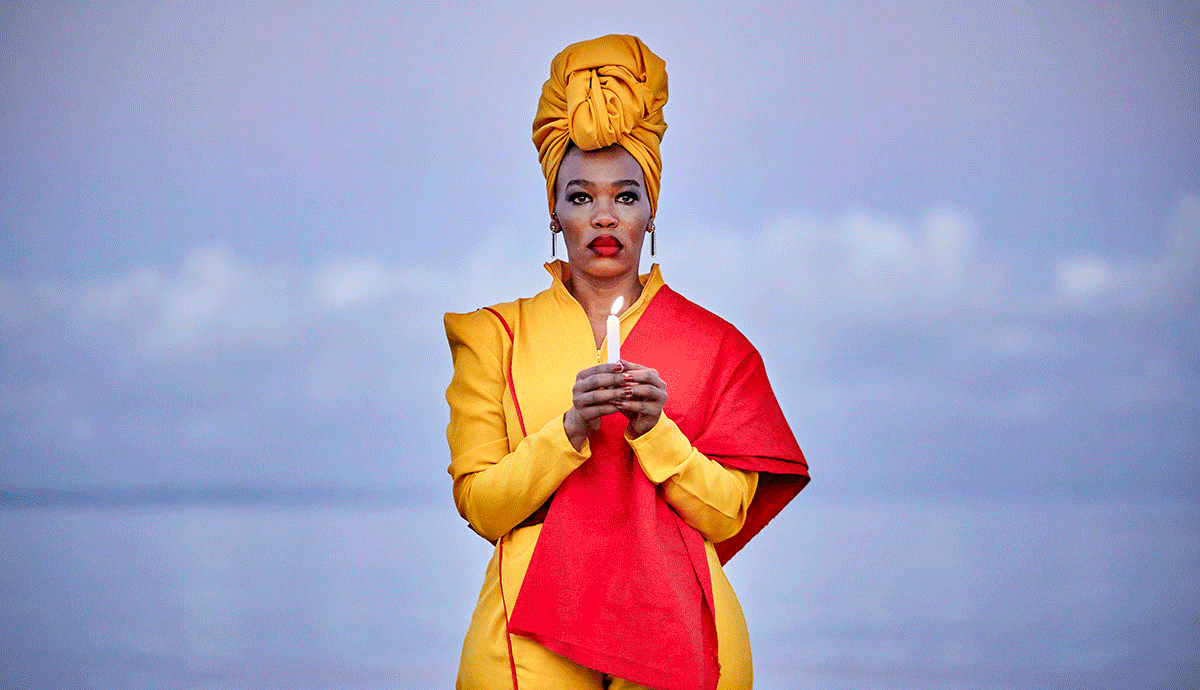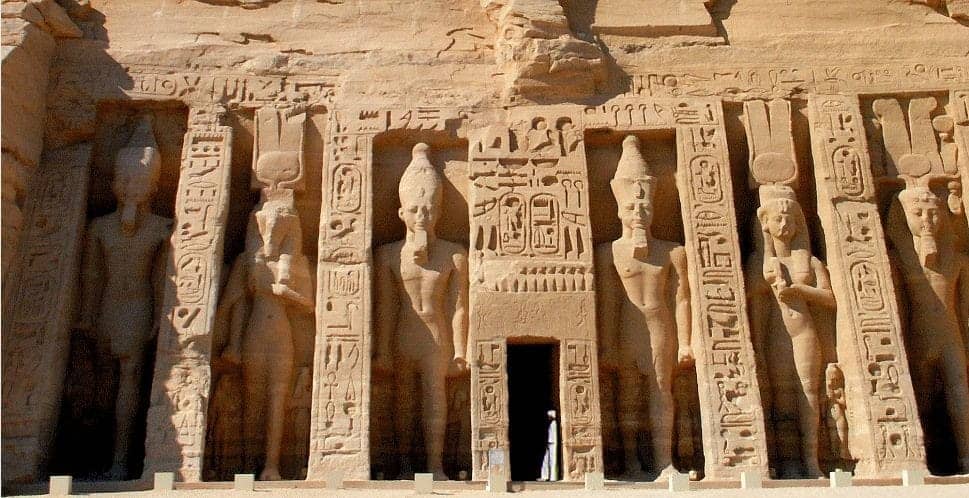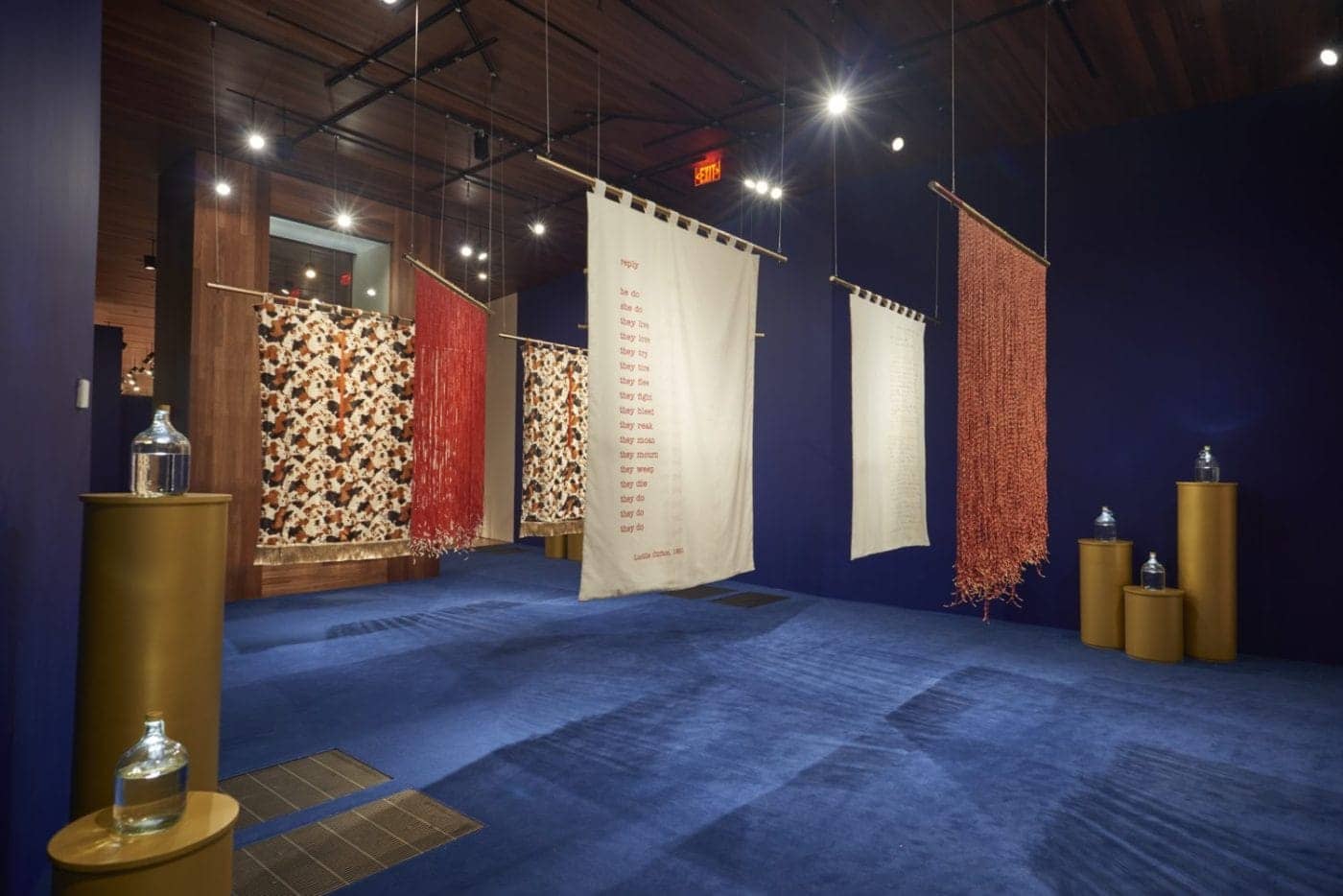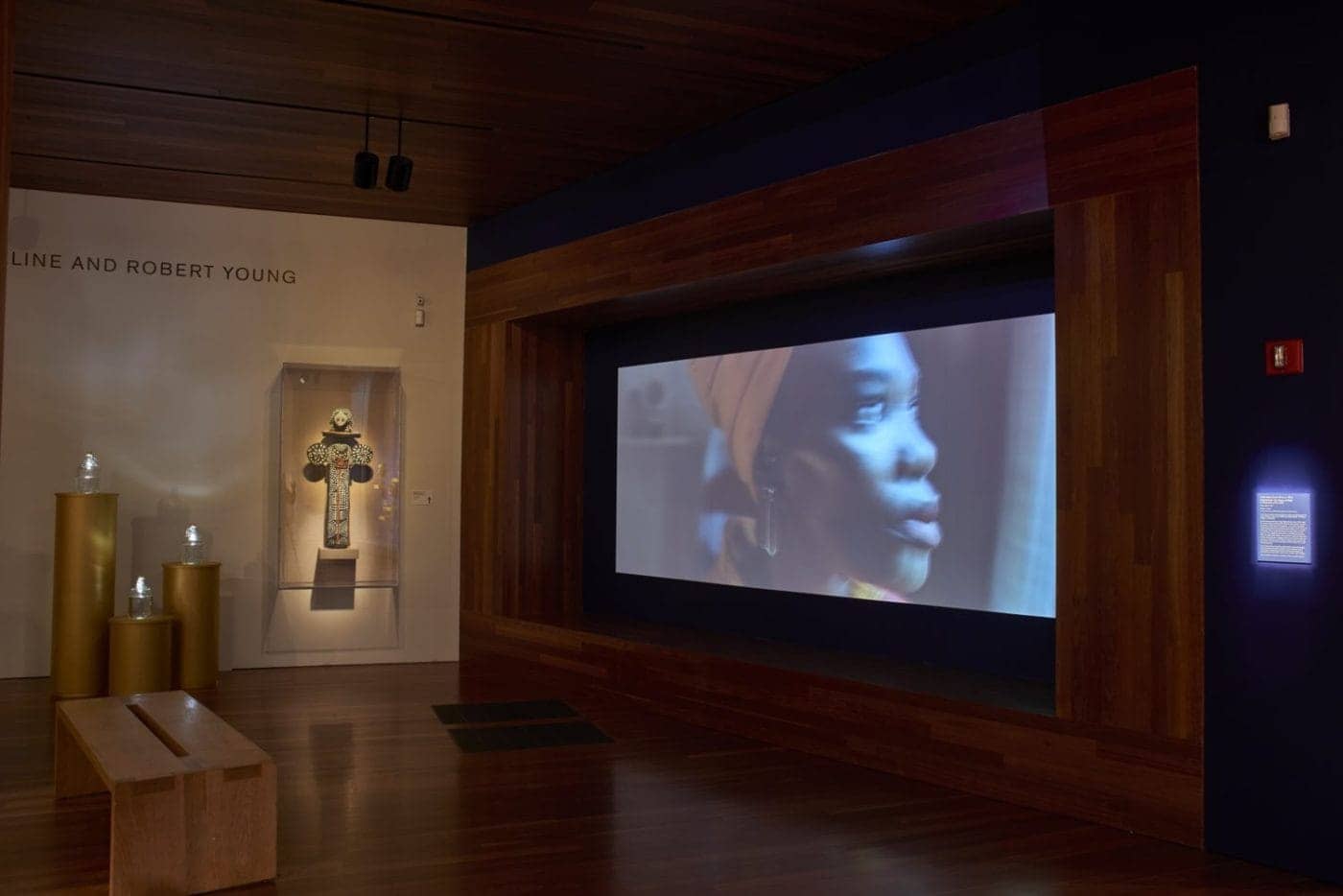
A review and interview with scholar Professor Manu Ampim
by Wanda Sabir
I think the people one spends New Year’s Day with says a lot. This year on Jan. 1 Ava and I went to see Ramses the Great and the Gold of the Pharaohs at the deYoung Museum in San Francisco. We’d planned to go Dec. 31, but for those in the Bay, it rained all day – it was cold, and, well, I wasn’t feeling happy about getting wet and maybe sick.
Sunday was supposed to be sunny and so, we got the tickets exchanged Sunday morning and we spent the whole day at the museum. For tickets, visit FAMSF. It’s a separate admission.
It was so much fun learning about the great king and his reign. It was like a fairytale, only it was true – well, probably with white supremacist filtering, but we know he was African, not European, and Queen Nefertari, his beloved, was celebrated in huge, monumental structures. His reign is noted for the 100-year peace treaty that serves as a model of civility with the Hittite Dynasty, which I knew.
There was so much to unpack – I wished Professor Manu was with me whispering in my ear rather than the tour recording, which was nice; I just didn’t know what to believe. I am a fan of Brother Tony Browder and his daughter, both seeped in Kemetic knowledge, not to mention our brother, the late Dr. Runoko Rashidi, who explored the African presence globally and found it. I was disturbed by the artifacts with all the darker Africans from places like Nubia with ropes around their necks.
High points included all the jewelry and mummies and tombs. I loved Nut, sky goddess, and the gold – gold, also called skin of the gods. The mixture of Kemetic spirituality via the stories was interesting, especially given the pronunciation of the names – Horus for Heru, Sebek and Set.
The Great Temple at Abu Simbel “is considered the grandest and most beautiful of the temples commissioned during the reign of Ramses II and one of the most beautiful in Egypt … It is believed that the axis of the temple was positioned by the ancient Egyptian architects in such a way that on Oct. 22 and Feb. 22, the rays of the sun would penetrate the sanctuary and illuminate the sculptures on the back wall, except for the statue of Ptah, a god connected with the realm of the dead, who always remained in the dark,” reads the Wikipedia page.

When my friends Tiyesha and Marty traveled to Egypt, they told us at one of our Diaspora Talks, African Americans on Africa, about this amazing event, one of many. At the exhibit, there is a button you can push to see the chamber light up. It was pretty cool.
If I ever get on a plane again, I would like to visit Kemet and see this. I would also like to participate in a dig with Brother Tony. The artifacts are what I wanted to see, and there is no interpretation needed there. Outside of going to Egypt, this is easier than getting on a plane and flying across the planet. However, I would certainly not discourage anyone from going. I hadn’t known there was a new museum in Cairo where the King Ramses was reinterred.
The films were also entertaining, the images in the cases and painted on the walls and ceilings also explained there. The Valley of the Kings, which I’d heard of, and Queen Nefertari’s tomb were so magnificent.
The movement between the galleries is well-choreographed. There are both silent and feature films throughout the program. It is an intimate space and though the tickets were staggered, if you want to miss the crowd, don’t go on the weekend midday. I am thinking early morning, 9:30-11 a.m. might be a better time to miss the crush. People were nice though, and no one seemed to be in a rush. I wasn’t.
I posed with “fine” – as in handsome – commanders, whom I’d wished were still around – I loved the coffins of a few women who looked like me – loved the gold masks, and the section on sacrifice and mummified offerings, like scarabs or beetles and cats and other animals, was interesting.
These rituals linked Kemet to the spiritual traditions of other African nations further west. We already know there is overlap between the Kemetic deities and Ifa, not to mention deities in the Southern region of Africa.
When we finally left the exhibit the sun was setting. The clouds looked like smoke from chimneys with red and orange in the skies.
We asked for directions to the ancestor exhibit in the Africa galleries. It was an interactive piece created by South African artist, Lhola Amira, titled, “Lhola Amira: Facing the Future.” Lhola wears two personas, one an ancestor, the other themselves, with two different names. I hope I will be able to speak with the artist, even though I missed the creative when THEY were here in December for the opening.
“The Egyptians believed you could take it with you.”
The seventh day of Kwanzaa is Imani, or, Faith. African Ancestors called Jan. 1 “The Jubilee,” Dec. 31, “Watch Night” – the day before the Emancipation Proclamation went into law. The entire weekend honors African ancestors, specifically those who were enslaved, whether we’re speaking of Africans in Bahia, Brazil – “IRMANDADE: The Shape of Water in Pindorama” (2018-2020), a single channel video production which honors the legacy of the Sisters of the Good Death, whom Lhola Amira showcases in the Africa gallery, or Dana King’s 350 Ancestors holding space outside in the concourse across from the deYoung Museum.
They have been there a year and a half this month. Juneteenth, or, African Freedom Day, makes two years – is this the end of their reign? What takes their place?
Someone anticipated my desire to put flowers in their hair Dec. 31, and when Ava and I crossed the street to greet them we saw purple and white flowers in most of their wire hair. They looked regal and happy. Ava sprayed them with rosemary and water, a purifying libation, while I played Sojourner’s Singing Bowl.
After we made the circle once we then sang “Lift Every Voice,” which was lit in the background at the Spreckels Temple of Music situated across the Concourse, a path lit with bubbling fountains, children’s running and laughter. Ava and I sang the traditional lyrics and then mixed it up and freestyled as we thanked our ancestors for holding onto faith and belief that one day we would be free, despite all the evidence to the contrary.
No one was freeing Black people without a fight, whether that was in New Orleans or Haiti or Brazil, or even California, where once Mexico lost California, Texas and Arizona, slavery became legal.
The Africa gallery was representative of the continent – a region underdeveloped and raped of resources, people and antiquities.
Amira’s exhibit contains the traditional motifs – water. In this case as one walks through the African Gallery there are jugs – gallon jugs – of water. There is salt to cleanse one’s hands and there are hanging tapestries one can walk through, walk by. Words on tapestries also join the visual landscape. Lucille Clifton’s poetry, W.E.B. Dubois.
I thought about putting my hands into the salt … but I don’t know if salt holds germs, so I nodded at the offering and let it pass. The same with the water. The idea of ablution, one I understood – this was a holy space – ancestors were sanctified. The harm both recognized and healing offered in these gestures of witness.
This was the perfect space to honor Ramses and the other ancestors in the gallery we’d just left. However, the Africa gallery was representative of the continent – a region underdeveloped and raped of resources, people and antiquities. How do you think the deYoung acquired these things?
It was nice seeing so many children and Black people at the museum on New Year’s Day. After we left the Ramses II gift shop, we saw another activity where, for a price, one could participate in a Virtual Ramses. I don’t know what else could have been offered after that visit, the videos were interpretive and interactive.
As I moved between chambers, each had its own unique flavor like we were walking through the tombs. The lighting and art were that engaging and it was also fun hearing comments and watching the younger patrons get caught up in the attractions trying to put themselves in the headspace of a King Ramses or the people of this time.
Upstairs in Facing the Future – continued
Red, white, multicolored strands of beaded strings … blood and flesh and what is unspoken and hidden was here as well. We could see other people approach and then they would disappear, and we’d see legs and feet. There was a privacy afforded – one’s grief honored, one’s sadness honored, one’s shame hidden.

Further ahead one saw the largely silent film of the artist on a journey home, tobacco, water, land, a boat, journey … spirit realm invitations sent out, food, laughter … more hanging cloth.
Amira’s film is lovely. I especially like the cigar smoke wafting, the water, THEIR body in water, high heels and barefoot. Water everywhere and then the forest or untamed wildness – to be able to let go and be free is captured well in the work.
I recalled being with the IRMANDADE in Brazil in 2015. It was about this same time of year as it is now – Christmas through New Year’s. The idea of the good death is a free death. No one wants to die a slave. These women would raise funds to buy the freedom of enslaved persons so they would not die a slave.
One wanted to enter the next realm with agency. The same themes also peopled the realm of the people in Kemet. One man who was a servant had servants in the next life. I liked the plate where the curator wrote: “The Egyptians believed you could take it with you.”
I thought that funny, if not quite true. What the people believed was that there was a continuity of life between here and there, so the food and provisions were for the next life. Christians also believe you can take it with you. They believe in the resurrection of the body; so did the Egyptians.
Other cultures do too. The terracotta warriors were buried with provisions so that in the next life they had what they needed to survive. In South Asia, when women were burned alive with their husbands, it was for his convenience in the next life. I have no experience with life after this life, but certain stories circulate culturally between communities. This shared space is an opportunity for conversation.

In an attempt to give readers a different and more accurate reflection on Ramses II, I spoke to our Bay Area resident scholar, Professor Manu Ampim, who is known for his primary research and knowledge about this region as well as Nubia, Ethiopia and elsewhere in the Fertile Crescent. The exhibit is of ancestral remains, the disturbance caused by these global tours is not a consideration, rather the money generated.
Imagine your ancestors treated this way. How would you feel? I contrast this exhibit with that National Memorial for Peace and Justice in Montgomery. There at the monument, the gravity of the loss of life is not absence.
Of course, the death is violent, and the people tracked like wild animals and slaughtered, yet the Equal Justice Initiative (EJI) has taken this tragic piece of American history and raised the dead to a place of honor and respect. Even the dirt where their bodies lay mutilated is given healing prayer. Why not the same for this great warrior king and his queen and other royal family?
I, too, looked at the riches, gold and jewels, rather than the persons who wore these items, who adorned their persons with such beautiful crafts. We need to think about these things – the people, not just their things, when we look at the artifacts and antiquities. Is the exhibit tasteful or exploitative? If so, to what end?
Lifted and placed in these cold rooms void of kindness, integrity or meaningful relation, the public, at least the Western consumers, are trapped in a warped space where what is sacred is commodified and devoid of life energy. Death is not death here. There is life after life.
There was no way to sit and reflect, even if a person wanted to think … thoughts crowd the mind later. It is 10 days later, and after reading Professor Manu’s comments to my questions, I feel a bit ashamed. I got caught up and forgot that these people are honored ancestors. I did not lift a cup in libation.
In a digital interview with Brother Manu Ampim, he writes: “Primary research is the greatest weapon against the distortion of African and African American culture and history.” Visit
Brother Manu in Kemet leading a tour.
Wanda Sabir: I went to see the Ramses II exhibit yesterday, Jan. 1, and wanted to ask if you have seen it. What did you think?
Manu Ampim: I have not seen it yet because I have been traveling, but it is the same general propaganda to find every angle to exploit African mummies for profit. There have been more exhibits featuring King Tutankhamen and his remains in the past 15 years than we have ever seen.
Ramses is also part of this agenda to highlight African rulers from Kemet and promote the viewing of their lives or virtual mummies, in order to draw in as much revenue as possible. This is mainly because most white people who visit museums are not concerned with the crude and indecent display of human remains and seem to get excited in many cases to view this obscene spectacle. The Ramses and Nefertari immersive virtual reality exhibit at the de Young promotes this savagery of “coming face-to-face with the mummy of Ramses.”
By the way, I have spent many hours in various museums carefully observing white folks and their reaction to museum displays, and there are almost never any moral concerns.
Wanda Sabir: I liked the artifacts; the narrative, though, is what I question. Can you send me material to read for reference on the Pharaoh and this period?
Manu Ampim: Well, there is “The Complete Royal Families of Ancient Egypt” by Dodson and Hilton. I know you know these places, and the new museum in Cairo.
Wanda Sabir: I am really interested in the battle with the Hittites in Karnack, the 100 year treaty, the buildings. It seems what distinguished the ruler was the length of his reign, the peace agreement and all the buildings and monuments he commissioned. He is said to have fathered 100 children. They said he married his own daughters.
Manu Ampim: Yes, the battle between Kemet and the Hittites ended with the first peace treaty in world history. Ramses did father over 100 children. There is no evidence that he had any physical relations with his daughters, as the marriages in Kemet were only political marriages to keep the throne in the royal family, controlled by the female line of descent.
Wanda Sabir: I’d like to know more about Queen Nefertari. Seems like a love match (smile).
Manu Ampim: Nefertari was the chief wife – check out her temple at Abu Simbel (pictured).
Wanda Sabir: It seemed that all the darker people had ropes around their necks. The plates said Nubians, Libyans …
Manu Ampim: All of the foreign nations had ropes around the necks in all four directions, north, south, east and west. They were war captives, and the Africans south of Kemet were simply among the war captives, and they are not depicted any more often than the other groups. In fact, their relations were mainly peaceful with the Africans in Kemet for long stretches of time in Kemet’s history, but there are some periods of conflict where Africans are shown as war captives, and this is when the Eurocentric propagandists step in and distort the evidence.
Wanda Sabir: Why is it that no African archeologists are invited to participate in these large-scale curated tours?
Manu Ampim: White nationalists masquerading as “objective” Egyptologists are biased and dishonest, as their discipline demands that they follow the script of only inviting white folks and the occasional Arab Egyptologist from Egypt, who knows how to stay in his place, and regurgitate the same old skewed propaganda. African scholars are frowned upon within Egyptology, because it is a discipline born out of the colonial era, and still carries the same racist baggage.
So, there you have it folks. Knowledge is power.
Bay View Arts and Culture Editor Wanda Sabir can be reached at wanda@wandaspicks.com. Visit her website at www.wandaspicks.com throughout the month for updates to Wanda’s Picks, her blog, photos and Wanda’s Picks Radio. Her shows are streamed live Wednesdays and Fridays at 8 a.m., can be heard by phone at 347-237-4610 and are archived at blogtalkradio.com/wandas-picks.





